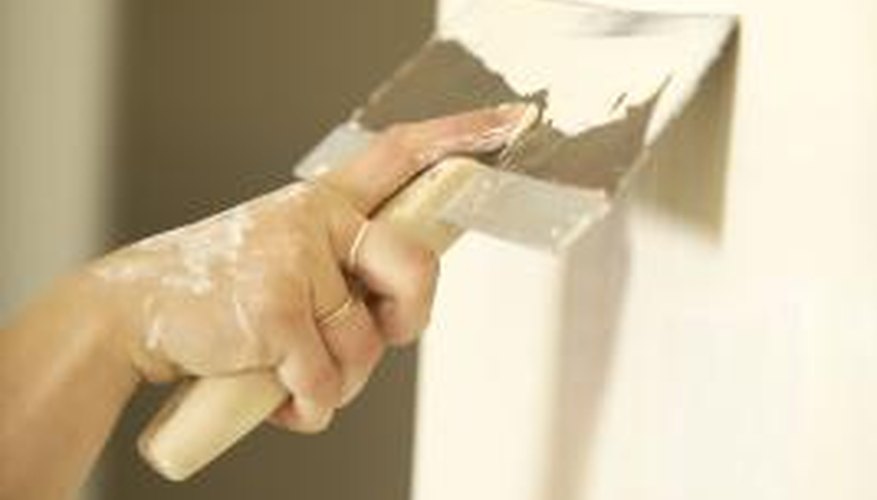Plaster was once the most common form of interior wall finishing, but this changed when the pressed gypsum boards known as drywall became widely available. You may think of plaster as a wall finish only found in historical or old homes. However, this ancient material still offers a number of benefits in modern applications. Examine both the advantages and disadvantages of plaster if you are remodelling or a building a home.
Advantage: Durability
If properly mixed and applied, a plaster coating creates a stronger and more durable wall finish than drywall, says Ask the Builder. The chemical reaction that occurs when water evaporates out of the plaster mixture develops strong bonds in the mixture. Plaster is more resistant to knocks and dents in most cases. The lath, or backing, used behind the plaster also affects its strength. A modern metal lath or tough backing boards are more durable than the thin wooden lath strips used in historical houses.
- If properly mixed and applied, a plaster coating creates a stronger and more durable wall finish than drywall, says Ask the Builder.
- A modern metal lath or tough backing boards are more durable than the thin wooden lath strips used in historical houses.
Advantage: Easier Installation
Drywall produces copious amounts of dust when cut and sanded. Finishing the drywall to a smooth surface takes multiple days because the joint compound that seals the seams between boards needs to dry before another coat is added. Plaster doesn't produce any dust except for a small amount released when water is first added to the powder. It also doesn't require sanding and, if multiple coats are used, they usually are applied before the bottom layer is completely dried. A plaster wall takes less time to finish and produces less mess.
- Drywall produces copious amounts of dust when cut and sanded.
- It also doesn't require sanding and, if multiple coats are used, they usually are applied before the bottom layer is completely dried.
Disadvantage: Difficult to Repair
When plaster cracks or crumbles due to shifting foundations or a strong blow to the wall, repairing the problem is tricky. Damaged plaster must be cut and scraped out, says Home Tips, without damaging the intact wall material. If the damage is severe, the lath or other backing requires replacement as well. Plaster also changes colour slightly as it ages, so new patches are brighter and stand out if you don't paint the entire wall after the repair.
- When plaster cracks or crumbles due to shifting foundations or a strong blow to the wall, repairing the problem is tricky.
- Damaged plaster must be cut and scraped out, says Home Tips, without damaging the intact wall material.
Disadvantage: Cost
Despite the extra labour of hanging and finishing drywall, it tends to be less expensive than plastering. Workers who are trained in the art of plaster application charge more for their time due to their specialised skills. Veneer plaster, which involves a single finishing layer of plaster over a backing board, costs less than traditional two or three coat finishes. Veneer finishes are less durable but have an average cost closer to drywall.
- Despite the extra labour of hanging and finishing drywall, it tends to be less expensive than plastering.
- Veneer plaster, which involves a single finishing layer of plaster over a backing board, costs less than traditional two or three coat finishes.
